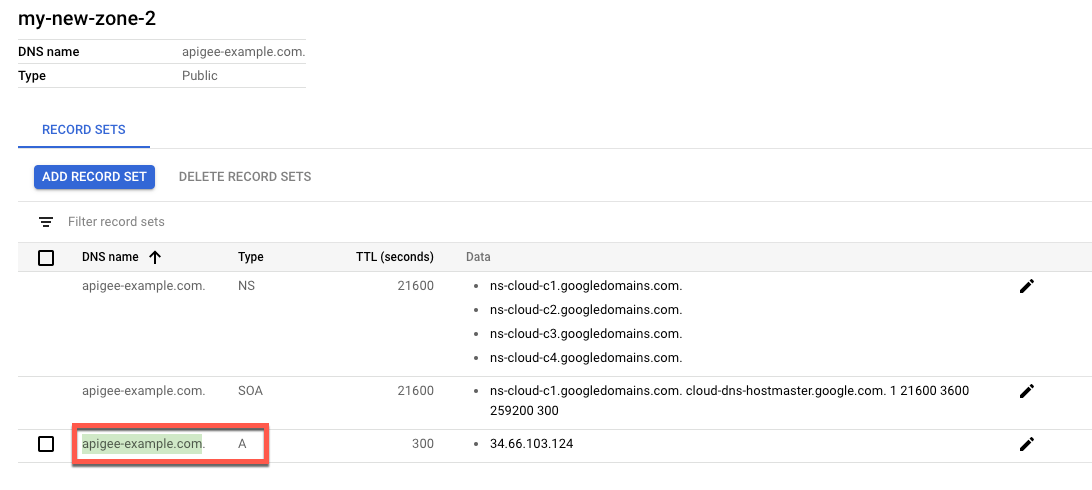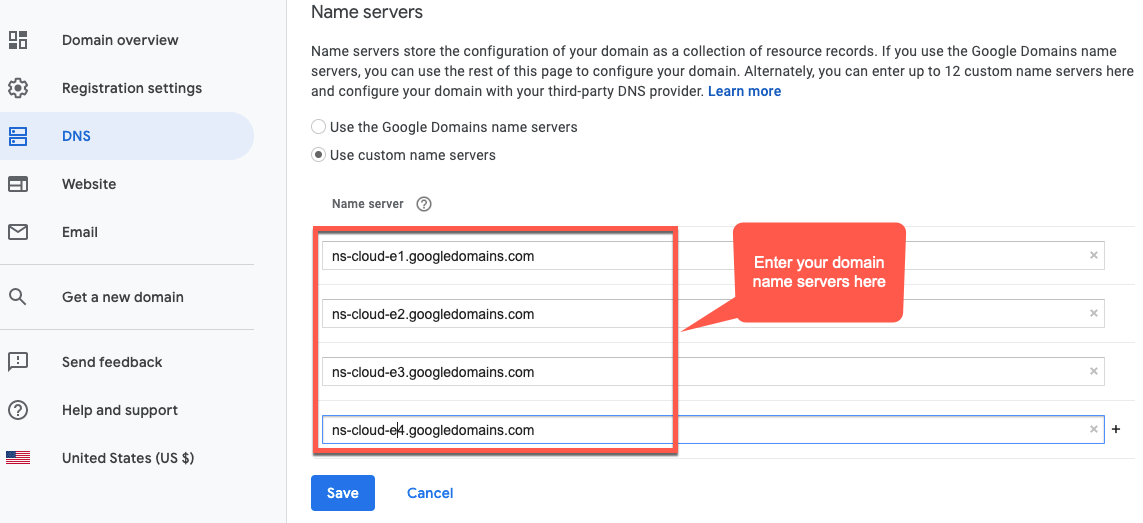이 주제에서는 Google Cloud DNS를 사용하여 Apigee 하이브리드 인그레스 IP 주소(일반적으로 이 주소는 하이브리드 설치 동안 이전에 구성한 고정 IP)를 가리키는 레코드 모음으로 DNS 영역을 구성하는 방법을 설명합니다.
등록된 도메인 가져오기
Google Domains 또는 다른 원하는 도메인 등록기관을 통해 도메인 이름을 등록할 수 있습니다.
관리형 영역 및 레코드 모음 만들기
이 섹션에서는 Google Cloud DNS에서 DNS 영역 및 레코드 모음을 만드는 방법을 설명합니다.
- 도메인의 관리형 영역과 레코드 모음을 만듭니다. 이 주소는 하이브리드로 API 프록시를 호출하기 위해 사용할 주소입니다.
- 관리형 공개 영역 만들기 자세한 내용은 관리형 공개 영역 만들기를 참조하세요.
- 다음 항목을 선택하여 새 레코드 모음을 만듭니다. 자세한 내용은 새 레코드 만들기를 참조하세요.
- DNS 이름:
api-services또는example-endpoint같이 외부 API 호출과 통신하는 엔드포인트의 이름 - 리소스 레코드 유형: A
- TTL 및 TTL 단위: 기본값 허용
- IP 주소: 생성한 고정 IP
- DNS 이름:
- 영역 세부정보 뷰에서 방금 만든 A 레코드의 DNS 이름을 복사하여
DOMAIN환경 변수에 저장합니다. 끝에 마침표를 포함하지 않도록 주의하세요.
export DOMAIN=dns_name_of_record
- 영역 세부정보 뷰에 4개의 DNS 서버가 새 영역의 NS 데이터로 나열됩니다. 다음 예시와 같이 DNS 레코드 데이터를 복사합니다.

Cloud DNS에 DNS 서버 추가
이 단계에서는 도메인의 DNS 서버를 Google Cloud DNS로 복사합니다. 이렇게 하면 Google Cloud에서 Google Cloud 프로젝트의 DNS를 관리할 수 있습니다.
Google Cloud 네임서버를 사용하도록 도메인 구성
도메인 등록기관으로 이동하여 Google Cloud 네임서버를 사용하도록 도메인의 DNS 설정을 수정합니다.
다음은 Google Domains에서 Google Cloud 네임서버를 입력하는 예시를 보여주는 스크린샷입니다.

이제 Google Cloud DNS에서 도메인의 DNS 레코드를 관리합니다.
1 2 3 4 5 (다음) 6단계: 환경 그룹 만들기